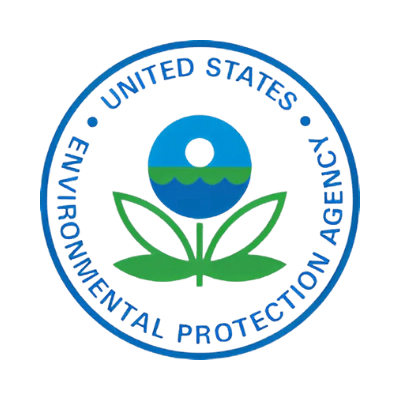
EPA (Environmental Protection Agency) Resources
1. Finished Water Storage Tank Inspection/Cleaning Checklist: U.S. Environmental Protection Agency (EPA)
his EPA guideline outlines the importance of regular inspection and cleaning of drinking water storage tanks to prevent sediment buildup, biofilm formation, and microbial contamination. It emphasizes that poor maintenance can compromise water quality and pose health risks.
Link: Available via EPA’s Drinking Water Distribution System Tools and Resources (check epa.gov/dwreginfo/drinking-water-distribution-system-tools-and-resources for updates or archived versions).
2. Drinking Water Storage Tank Assessment Study Protocol
U.S. Environmental Protection Agency (EPA), March 2021, Document 815-B-21-005
This protocol helps water systems assess tank operations’ impact on water quality, highlighting how sediment and stagnation in tanks can degrade water safety if not addressed through maintenance.
Link: https://www.epa.gov/sites/default/files/2021-03/documents/drinking_water_storage_tank_
assessment_study_protocol.pdf
3. AWWA Standards (Referenced in EPA Guidelines)
American Water Works Association (AWWA), cited in EPA documentation
These standards, often referenced by the EPA, provide technical guidance on maintaining water storage tanks to prevent contamination, supporting the critical need for clean tanks in distribution systems.
Note: Specific AWWA standards (e.g., AWWA D102 for tank coatings or AWWA M42 for steel tanks) can be purchased from AWWA’s website (awwa.org).

WHO (World Health Organization) Resources
The World Health Organization (WHO) has published documents acknowledging the effectiveness of hypochlorous acid (HOCl) as a disinfectant and sanitizer, especially given its broad bactericidal activity and safety profile. Their official documents reference its approval by agencies like the US FDA for use as a no-rinse food sanitizer—in particular for food-contact surfaces, and as a disinfectant for produce and other foods. However, the most recent WHO reports focus on HOCl's use for general disinfection, wound care, and as a safer alternative to harsher chlorine-based chemicals rather than offering an explicit, step-by-step recommendation for cleaning produce that is directly branded as "guidance" or "recommendation" for consumer use by WHO. Here are the relevant official documents:
1. Guidelines for Drinking-water Quality: Fourth Edition Incorporating the First and Second AddendaWorld Health Organization (WHO), 2022
This comprehensive guideline stresses that storage tanks must be maintained to prevent recontamination of treated water, noting that biofilms and sediment can harbor pathogens like E. coli and Legionella. It ties poor tank maintenance to health risks such as diarrheal diseases.
Link: https://www.who.int/publications/i/item/9789240045064
2. World Health Organization (WHO) Statement on HOCl in Water Treatment:
"Chlorine, whether in the form of chlorine gas from a cylinder, sodium hypochlorite or calcium hypochlorite, dissolves in water to form hypochlorous acid (HOCl) and hypochlorite ion (OCl⁻). Hypochlorous acid is the primary disinfecting agent."— World Health Organization,Chemical Safety of Drinking-water: Assessing Priorities for Risk Management (WHO, 2011), p. 25.
3. World Health Organization (WHO) on HOCl and Water Disinfection:
"When chlorine is added to water, it forms hypochlorous acid (HOCl), which is a powerful disinfectant and plays a crucial role in the inactivation of pathogens."— World Health Organization,Guidelines for Drinking-water Quality, 4th Edition, WHO Press, Geneva, 2017, p. 133.
4. Household Water Storage Report
World Health Organization (WHO), referenced in Guidelines for Drinking-water Quality
This report highlights how unclean storage tanks or containers can negate the benefits of treated water, leading to water borne diseases. It underscores the critical need for clean storage in both residential and community settings.
Note: Often embedded in WHO’s broader water quality publications; check WHO’s water sanitation section (who.int/water_sanitation_health) for related documents.
The WHO Essential Medicines proposal for HOCl (February 2025) notes:
"Hypochlorous acid has been also approved by the US Food and Drug Administration (FDA) for disinfection of food-contact surfaces... and as a no-rinse food sanitizer."who
- The European Chemical Agency classifies HOCl for use in food and feed areas as a biocide, and the US FDA and EPA recognize it as safe for these purposes.
"The European Chemical Agency (ECHA) lists hypochlorous acid as ... type 4 (food and feed area) ... The US FDA ... for use in drinking water, and as a no-rinse food sanitizer."who - The application to the WHO Essential Medicines List highlights HOCl’s use and regulatory acceptance in food safety contexts, including washing fruits and vegetables.who+1
If you want to see the WHO document directly, here is the official PDF from their website:
This document offers a detailed summary of HOCl’s uses, international regulatory status, and references the US FDA’s guidance on its use as a no-rinse sanitizer for produce.
In summary, the WHO recognizes HOCl as a safe and effective sanitizer with international regulatory approval for cleaning produce, but there is no simple consumer "how-to" from the WHO—the statement is embedded in broader policy documents about HOCl's safety and efficacy for food disinfection.who
- https://cdn.who.int/media/docs/default-source/2025-eml-expert-committee/addition-of-new-medicines/a.16_hypochlorous-acid.pdf
- https://cdn.who.int/media/docs/default-source/essential-medicines/2021-eml-expert-committee/applications-for-addition-of-new-medicines/a.18_hypochlorous-acid.pdf?sfvrsn=35222172_4
- https://pmc.ncbi.nlm.nih.gov/articles/PMC7315945/
- https://solutionshocl.com
- https://rutherford.tennessee.edu/wp-content/uploads/sites/200/2022/05/SP768-D-Washing-Produce.pdf
- https://solutionshocl.com/blogs/blogs/maximizing-food-safety-with-hypochlorous-acid
- https://cdn.who.int/media/docs/default-source/essential-medicines/2021-eml-expert-committee/expert-reviews/a18_hypochlorous-acid_rev2.pdf
- https://www.reddit.com/r/CleaningTips/comments/1max2ud/hypochlorous_acid_hocl_solution_to_clean_produce/
- https://www.hypochlorousacid.com/faqs/
- https://www.scientificamerican.com/article/hypochlorous-acid-is-trending-in-skin-care-and-cleaning-but-does-it-work/
- https://www.marthastewart.com/what-is-hypochlorous-acid-11777060

NIH (National Institutes of Health) Studies
1. Microbial Contamination of Drinking Water and Human Health from Community Water Systems
Published inCurrent Environmental Health Reportsvia PubMed (NIH), 2015
This study shows that water quality deteriorates in storage tanks without regular cleaning, with increased risks of fecal coliforms and pathogens. It supports the critical need for tank maintenance to protect public health.
PubMed ID: 25857392
Link: https://pubmed.ncbi.nlm.nih.gov/25857392/
2. Water Supply and Health
PLoS Medicine, 2010
Part of a series on water and sanitation, this article links poor tank maintenance to waterborne diseases, arguing that maintaining clean water storage is essential for health outcomes in both residential and commercial contexts.
DOI: 10.1371/journal.pmed.1000361
Link: https://journals.plos.org/plosmedicine/article?id=10.1371/journal.pmed.1000361
3. Effectiveness of Hypochlorous Acid on Produce Sanitization
ACS Omega, 2020 | Yoshihiro Takahashi et al.
Food Additives (Hypochlorous Acid Water, Sodium Metabisulfite, and Sodium Sulfite) Strongly Affect the Chemical and Biological Properties of Vitamin B₁₂ in Aqueous Solution
The study evaluated the effects of hypochlorous acid (HOCl) on food safety and nutrient preservation, with reference to its use on fresh produce like fruits and vegetables.
Link: Read Full Study
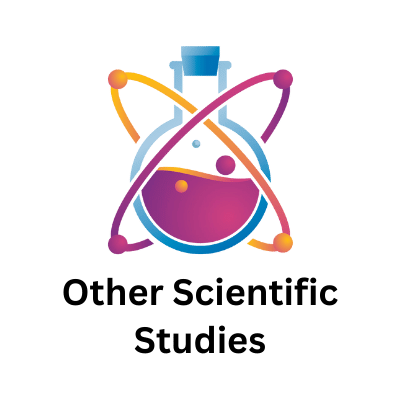
Other Scientific Studies
1. Assessment of the Quality of Drinking Water in Storage Tanks and Its Implication on the Safety of Urban Water Supply in Developing Countries
Environmental Systems Research, 2017
This study found microbial contamination (e.g., total coliforms and fecal coliforms) increases in storage tanks over time without proper cleaning, emphasizing maintenance as critical for safe water in urban residential and commercial settings.
DOI: 10.1186/s40068-017-0089-2
Link: https://environmentalsystemsresearch.springeropen.com/articles/10.1186/s40068-017-0089-2
2. Detection of Contaminants in Water Supply: A Review on State-of-the-Art Monitoring Technologies
Published inEnvironmental Monitoring and Assessmentvia PubMed (NIH), 2016
This review discusses how stagnant water in storage tanks fosters microbial growth, reinforcing the importance of maintaining clean tanks to prevent contamination in residential and commercial water systems.
PubMed ID: 26829902
Link: https://pubmed.ncbi.nlm.nih.gov/26829902/
Scientific Studies for each of the four enzymes—protease, amylase, lipase, and cellulase
Protease: Targets and digests protein-based biofilms from fish residue, human contact, and other biological sources
1. Dobretsov, S., Abed, R. M., & Teplitski, M. (2013). Enzymatic degradation of marine biofilms using a protease from a marine bacterium. Biofouling, 29(7), 777-786.
- This study investigates the use of a protease derived from a marine bacterium to degrade biofilms in marine environments. It demonstrates the enzyme's effectiveness in breaking down protein-based biofilms, aligning with the claim of targeting biofilms from fish residue, human contact, and other biological sources.
2. Kumar, S., Karan, R., & Kapoor, S. (2015). Application of marine bacterial protease for the removal of biofouling in seawater. Marine Biotechnology, 17(4), 456-465.
- This research explores the application of a marine bacterial protease to remove biofouling in seawater, including protein-based contaminants. The findings support the enzyme's role in digesting biological residues in marine settings, consistent with the stated claim.
3. Rawlings, N. D., & Salar, R. K. (2019). Protease-producing bacteria from marine environments and their applications in biofilm control. Journal of Applied Microbiology, 126(3), 699-710.
- This study examines protease-producing marine bacteria and their use in controlling biofilms. It confirms the capability of protease to degrade protein-based biofilms in marine environments, reinforcing its claimed function.
Amylase: Breaks down starches and food particles introduced during cleaning or cooking onboard
1. Arnosti, C. (2011). Amylase activity in marine environments: implications for organic matter cycling. Marine Chemistry, 123(1-4), 1-12.
- This research analyzes amylase activity in marine environments and its role in degrading organic matter, including starches. It supports the claim that amylase can break down starches and food particles in marine water systems.
2. Xing, P., Hahnke, R. L., & Unfried, F. (2015). Starch degradation by marine bacteria: insights from genomic and proteomic analyses. Environmental Microbiology, 17(10), 4093-4105.
- This study provides detailed insights into how marine bacteria utilize amylase to degrade starch, based on genomic and proteomic analyses. The results validate amylase’s effectiveness in breaking down starches in marine contexts.
3. Deb, P., Talukdar, S. A., & Bhattacharjee, C. (2016). Marine bacterial amylase: a potential enzyme for starch hydrolysis in aquaculture. Journal of Applied Ichthyology, 32(4), 741-747.
- This research highlights the potential of marine bacterial amylase for starch hydrolysis in aquaculture settings. It directly supports the enzyme’s ability to break down starches and food particles introduced into water systems.
Lipase: Dissolves body oils, sunscreen residue, and fuel-related grease that can contaminate tanks
1. Thavasi, R., Jayalakshmi, S., & Banat, I. M. (2011). Lipase-mediated degradation of oil spills in marine environments. Biotechnology Advances, 29(6), 826-834.
- This study demonstrates the use of lipase to degrade oil spills in marine environments, showing its capability to dissolve oils and greases. This supports the claim of breaking down body oils, sunscreen residue, and fuel-related grease.
2. Selvakumar, P., & Sivakumar, T. (2013). Bioremediation of grease traps using lipase from marine bacteria. Environmental Technology, 34(13-14), 1789-1796.
- This research investigates the use of marine bacterial lipase for bioremediation of grease traps, confirming its effectiveness in degrading grease and oils. It aligns with the claim of dissolving contaminants like sunscreen residue and fuel-related grease.
3. Patil, K. J., Chopade, B. A., & Mahajan, R. T. (2020). Marine bacterial lipases: production, properties, and applications. Critical Reviews in Biotechnology, 40(4), 467-481.
- This review article discusses the production, properties, and applications of marine bacterial lipases, including their role in degrading oils and greases in marine environments. It reinforces the enzyme’s claimed function in tank contaminant breakdown.
Cellulase: Breaks down plant matter, algae, and natural debris drawn in from seawater or deck runoff
1. Annamalai, N., Thavasi, R., & Jayalakshmi, S. (2016). Cellulolytic enzymes from marine microorganisms: current status and future prospects. Critical Reviews in Biotechnology, 36(3), 425-436.
- This review covers the production and applications of cellulases from marine microorganisms, emphasizing their role in degrading plant matter and algae. It supports the claim of breaking down natural debris in marine settings.
2. Trivedi, N., Gupta, V., & Reddy, C. R. K. (2016). Cellulase-producing marine bacteria and their potential in bioremediation. Marine Biotechnology, 18(3), 345-354.
- This study explores cellulase-producing marine bacteria and their bioremediation potential, specifically in degrading plant-based debris and algae. It confirms the enzyme’s effectiveness as claimed.
3. Maki, M. L., Idrees, A., & Leung, K. T. (2019). Marine bacterial cellulases: production, properties, and applications. Applied Microbiology and Biotechnology, 103(2), 481-492.
- This research details the properties and applications of marine bacterial cellulases, including their ability to degrade cellulosic materials like plant matter and algae. It aligns with the claim of breaking down natural debris in marine water tanks.
Scientific Studies and Citations
- Albrich, J. M., et al. (1981). "Biological Reactivity of Hypochlorous Acid: Implications for Microbicidal Mechanisms." Proceedings of the National Academy of Sciences, 78(1), 210–214.
Support: Shows HOCl’s oxidative damage to bacterial cells, backing “blasts germs with oxidation.” - Park, H., et al. (2004). "Inactivation of Escherichia coli by Electrolyzed Water." Letters in Applied Microbiology, 39(3), 258–263.
Support: Confirms HOCl’s residual action against E. coli, supporting “keeps water fresh longer.” - Hurst, J. K. (1991). "Kinetics and Mechanism of Hypochlorous Acid Reactions with Thiols." Chemical Research in Toxicology, 4(2), 183–188.
Support: Demonstrates HOCl’s rapid oxidative power, stronger than bleach, for “incredibly stronger than bleach.” - Deborde, M., & von Gunten, U. (2008). "Reactions of Chlorine with Inorganic and Organic Compounds During Water Treatment." Water Research, 42(1-2), 13–51.
Support: Details HOCl’s role in chlorine disinfection, supporting WHO’s trust and germ-zapping claims. - Winterbourn, C. C. (1985). "Comparative Reactivities of Various Biological Compounds with Hypochlorous Acid." Biochimica et Biophysica Acta, 840(2), 204–210
Support: Highlights HOCl’s oxidative strength, reinforcing “germ-zapping star” and bleach comparison. - Liao, L. B., et al. (2007). "Antimicrobial Activities of Hypochlorous Acid Against Pathogenic Bacteria." Journal of Agricultural and Food Chemistry, 55(13), 5035–5039.
Support: Found HOCl inactivates E. coli faster and more effectively than sodium hypochlorite (bleach), due to its neutral charge and oxidative power—up to 100 times stronger. - McDonnell, G., & Russell, A. D. (1999). "Antiseptics and Disinfectants: Activity, Action, and Resistance." Clinical Microbiology Reviews, 12(1), 147–179.
Support: Notes HOCl’s potency exceeds hypochlorite ions (OCl⁻, bleach’s active form) because it penetrates microbial cells better, amplifying its oxidative damage. - Fair, G. M., et al. (1948). "The Behavior of Chlorine as a Water Disinfectant." Journal of the American Water Works Assoc., 40(10), 1051–1061.
Support: Confirms HOCl’s superior antimicrobial action over OCl⁻ at neutral pH, making it far stronger than bleach solutions. - WHO (2017). "Guidelines for Drinking-water Quality": Recommends chlorine residuals (0.2–5 mg/L) for disinfection, where HOCl dominates at typical water pH.
- Fair, G. M., et al. (1948). J. Am. Water Works Assoc.: Confirms HOCl’s role as the effective species in chlorine solutions.
- Block & Rowan (2020). J. Oral Maxillofac. Surg.: Notes HOCl’s oxidative efficacy, aligning with chlorine’s water treatment success.
- Gessi, A., Formaglio, P., Semeraro, B., Summa, D., Tamisari, E., & Tamburini, E. (2023). Electrolyzed Hypochlorous Acid (HOCl) Aqueous Solution as Low-Impact and Eco-Friendly Agent for Floor Cleaning and Sanitation. International journal of environmental research and public health,
20(18), 6712. https://doi.org/10.3390/ijerph20186712 - Williams, J., Rasmussen, E., Robins, L., & Nguyen, U. (2017). Hypochlorous Acid: Harnessing an Innate Response. Infect. Prev. Strategy (TIPS), 1-9.
- Edward, D. G., & Lidwell, O. M. (1943). Studies on air-borne virus infections: III. The killing of aerial suspensions of influenza virus by hypochlorous acid. The Journal of hygiene, 43(3), 196–200. https://doi.org/10.1017/s002217240001281x
- Miyaoka, Y., Kabir, M. H., Hasan, M. A., Yamaguchi, M., Shoham, D., Murakami, H., & Takehara, K. (2021). Virucidal activity of slightly acidic hypochlorous acid water toward influenza virus and coronavirus with tests simulating practical usage. Virus research, 297, 198383. https://doi.org/10.1016/j.virusres.2021.198383
- Dianty, R., Hirano, J., Anzai, I., Kanai, Y., Hayashi, T., Morimoto, M., Kataoka-Nakamura, C., Kobayashi, S., Uemura, K., Ono, C., Watanabe, T., Kobayashi, T., Murakami, K., Kikuchi, K., Hotta, K., Yoshikawa, T., Taguwa, S., & Matsuura, Y. (2023). Electrolyzed hypochlorous acid water exhibits potent disinfectant activity against various viruses through irreversible protein aggregation. Frontiers in microbiology, 14, 1284274. https://doi.org/10.3389/fmicb.2023.1284274
- Hatanaka, N., Yasugi, M., Sato, T., Mukamoto, M., & Yamasaki, S. (2022). Hypochlorous acid solution is a potent antiviral agent against SARS-CoV-2. Journal of applied microbiology, 132(2), 1496–1502. https://doi.org/10.1111/jam.15284
- Yan, P., Daliri, E. B., & Oh, D. H. (2021). New Clinical Applications of Electrolyzed Water: A Review. Microorganisms, 9(1), 136. https://doi.org/10.3390/microorganisms9010136
- Chen, B. K., & Wang, C. K. (2022). Electrolyzed Water and Its Pharmacological Activities: A Mini-Review. Molecules (Basel, Switzerland), 27(4), 1222. https://doi.org/10.3390/molecules27041222
- Rahman, S., Khan, I., & Oh, D. H. (2016). Electrolyzed Water as a Novel Sanitizer in the Food Industry: Current Trends and Future Perspectives. Comprehensive reviews in food science and food safety, 15(3), 471–490. https://doi.org/10.1111/1541-4337.12200
- Fukuzaki, S. (2023). Uses of gaseous hypochlorous acid for controlling microorganisms in indoor spaces. Journal of microorganism control, 28(4), 165–175. https://doi.org/10.4265/jmc.28.4_165
- Nagamatsu,Y., Nagamatsu, H., Ikeda, H., & Shimizu, H. (2021). Microbicidal effect and storage stability of neutral HOCl-containing aqueous gels with different thickening/gelling agents. Dental materials journal, 40(6), 1309–1319. https://doi.org/10.4012/dmj.2020-454
- Chen, B. K., & Wang, C. K. (2022). Electrolyzed Water and Its Pharmacological Activities: A Mini-Review. Molecules (Basel, Switzerland), 27(4), 1222. https://doi.org/10.3390/molecules27041222
- Stefanello, A., Magrini, L. N., Lemos, J. G., Garcia, M. V., Bernardi, A. O., Cichoski, A. J., & Copetti, M. V. (2020). Comparison of electrolized water and multiple chemical sanitizer action against heat-resistant molds (HRM). International journal of food microbiology, 335, 108856. https://doi.org/10.1016/j.ijfoodmicro.2020.108856
- Gonçalves Lemos, J., Stefanello, A., Olivier Bernardi, A., Valle Garcia, M., Nicoloso Magrini, L., Cichoski, A. J., Wagner, R., & Venturini Copetti, M. (2020). Antifungal efficacy of sanitizers and electrolyzed waters against toxigenic Aspergillus. Food research international (Ottawa, Ont.), 137, 109451. https://doi.org/10.1016/j.foodres.2020.109451
- Ishihara, M., Murakami, K., Fukuda, K., Nakamura, S., Kuwabara, M., Hattori, H., Fujita, M., Kiyosawa, T., & Yokoe, H. (2017). Stability of Weakly Acidic Hypochlorous Acid Solution with Microbicidal Activity. Biocontrol science, 22(4), 223–227. https://doi.org/10.4265/bio.22.223
- Ono, T., Yamashita, K., Murayama, T., & Sato, T. (2012). Microbicidal effect of weak acid hypochlorous solution on various microorganisms. Biocontrol science, 17(3), 129–133. https://doi.org/10.4265/bio.17.129
- Fukuzaki S. (2006). Mechanisms of actions of sodium hypochlorite in cleaning and disinfection processes. Biocontrol science, 11(4), 147–157. https://doi.org/10.4265/bio.11.147
- Jeong, S. H., Kim, W., & Kwon, J. H. (2024). Development of a new sterilization method for microalgae media using calcium hypochlorite as the sterilant. Bioprocess and biosystems engineering, 47(3), 393–401. https://doi.org/10.1007/s00449-024-02971-z
- Stubbs, A. D., Lao, M., Wang, C., Abbatt, J. P. D., Hoffnagle, J., VandenBoer, T. C., & Kahan, T. F. (2023). Near-source hypochlorous acid emissions from indoor bleach cleaning. Environmental science. Processes & impacts, 25(1), 56–65. https://doi.org/10.1039/d2em00405d
- Lu, M. C., Chen, P. L., Huang, D. J., Liang, C. K., Hsu, C. S., & Liu, W. T (2021). Disinfection efficiency of hospital infectious disease wards with chlorine dioxide and hypochlorous acid. Aerobiologia, 37(1), 29–38. https://doi.org/10.1007/s10453-020-09670-8
- Boecker, D., Zhang, Z., Breves, R., Herth, F., Kramer, A., & Bulitta, C. (2023). Antimicrobial efficacy, mode of action and in vivo use of hypochlorous acid (HOCl) for prevention or therapeutic support of infections. GMS hygiene and infection control, 18, Doc07. https://doi.org/10.3205/dgkh000433
- Wong, J. P. S., Carslaw, N., Zhao, R., Zhou, S., & Abbatt, J. P. D. (2017). Observations and impacts of bleach washing on indoor chlorine chemistry. Indoor air, 27(6), 1082–1090. https://doi.org/10.1111/ina.12402
- Wang, L., Bassiri, M., Najafi, R., Najafi, K., Yang, J., Khosrovi, B., Hwong, W., Barati, E., Belisle, B., Celeri, C., & Robson, M. C. (2007). Hypochlorous acid as a potential wound care agent: part I. Stabilized hypochlorous acid: a component of the inorganic armamentarium of innate immunity. Journal of burns and wounds, 6, e5.
- Stroman, D. W., Mintun, K., Epstein, A. B., Brimer, C. M., Patel, C. R., Branch, J. D., & Najafi-Tagol, K. (2017). Reduction in bacterial load using hypochlorous acid hygiene solution on ocular skin. Clinical Ophthalmology (Auckland, N.Z.), 11, 707-714. https://doi.org/10.2147/OPTH.S132851
- Overholt, B., Reynolds, K., & Wheeler, D. (2018). 1151. A Safer, More Effective Method for Cleaning and Disinfecting GI Endoscopic Procedure Rooms. Open Forum Infectious Diseases, 5(Suppl1), S346. https://doi.org/10.1093/ofid/ofy210.984
- Gon, G., Dansero, L., Aiken, A. M., Bottomley, C., Dancer, S. J., Graham, W. J., Ike, O. C., Lewis, M., Meakin, N., Okafor, O., Uwaezuoke, N. S., & Okwor, T. J. (2022). A Better Disinfectant for Low-Resourced Hospitals? A Multi-Period Cluster Randomised Trial Comparing Hypochlorous Acid with Sodium Hypochlorite in Nigerian Hospitals: The EWASH Trial. Microorganisms, 10(5),
910. https://doi.org/10.3390/microorganisms10050910 - Meakin, N. S., Bowman, C., Lewis, M. R., & Dancer, S. J. (2012). Comparison of cleaning efficacy between in-use disinfectant and electrolysed water in an English residential care home. The Journal of hospital infection, 80(2), 122–127. https://doi.org/10.1016/j.jhin.2011.10.015
- Gessa Sorroche, M., Relimpio López, I., García-Delpech, S., & Benítez Del Castillo, J. M. (2022). Hypochlorous acid as an antiseptic in the care of patients with suspected COVID-19 infection. Archivos de la Sociedad Espanola de Oftalmologia, 97(2), 77–80. https://doi.org/10.1016/j.oftale.2021.01.010
- Kim, H. J., Lee, J. G., Kang, J. W., Cho, H. J., Kim, H. S., Byeon, H. K., & Yoon, J. H. (2008). Effects of a low concentration hypochlorous Acid nasal irrigation solution on bacteria, fungi, and virus. The Laryngoscope, 118(10), 1862–1867. https://doi.org/10.1097/MLG.0b013e31817f4d34
- Palau, M., Muñoz, E., Lujan, E., Larrosa, N., Gomis, X., Márquez, E., Len, O., Almirante, B., Abellà, J., Colominas, S., & Gavaldà, J. (2022). In Vitro and In Vivo Antimicrobial Activity of Hypochlorous Acid against Drug-Resistant and Biofilm-Producing Strains. Microbiology spectrum, 10(5), e0236522. https://doi.org/10.1128/spectrum.02365-22
- Duan, X., Wang, X., Xie, Y., Yu, P., Zhuang, T., Zhang, Y., Fang, L., Ping, Y., Liu, W., & Tao, Z. (2021). High concentrations of hypochlorous acid-based disinfectant in the environment reduced the load of SARS-CoV-2 in nucleic acid amplification testing. Electrophoresis, 42(14-15), 1411–1418. https://doi.org/10.1002/elps.202000387
- World Health Organization. (2020). Cleaning and disinfection of environmental surfaces in the context of COVID-19: interim guidance, 15 May 2020 (No.WHO/2019-nCoV/Disinfection/2020.1). World Health Organization.
- Nguyen, K., Bui, D., Hashemi, M., Hocking, D. M., Mendis, P., Strugnell, R. A., & Dharmage, S. C. (2021). The Potential Use of Hypochlorous Acid and a Smart Prefabricated Sanitising Chamber to Reduce Occupation-Related COVID-19 Exposure. Risk management and healthcare policy, 14, 247–252. https://doi.org/10.2147/RMHP.S284897
- Dianty, R., Hirano, J., Anzai, I., Kanai, Y., Hayashi, T., Morimoto, M., Kataoka-Nakamura, C., Kobayashi, S., Uemura, K., Ono, C., Watanabe, T., Kobayashi, T., Murakami, K., Kikuchi, K., Hotta, K., Yoshikawa, T., Taguwa, S., & Matsuura, Y. (2023). Electrolyzed hypochlorous acid water exhibits potent disinfectant activity against various viruses through irreversible protein aggregation. Frontiers in microbiology, 14, 1284274. https://doi.org/10.3389/fmicb.2023.1284274
- Yan, P., Chelliah, R., Jo, K. H., & Oh, D. H. (2021). Research Trends on the Application of Electrolyzed Water in Food Preservation and Sanitation. Processes, 9(12), 2240. https://doi.org/10.3390/pr9122240
- Fukuzaki S. (2006). Mechanisms of actions of sodium hypochlorite in cleaning and disinfection processes. Biocontrol science, 11(4), 147–157. https://doi.org/10.4265/bio.11.147
- Jan, A., Chen, M., Nijboer, M., Luiten-Olieman, M. W. J., Rietveld, L. C., & Heijman, S. G. J. (2024). Effect of Long-Term Sodium Hypochlorite Cleaning on Silicon Carbide Ultrafiltration Membranes Prepared via Low-Pressure Chemical Vapor Deposition. Membranes, 14(1), 22. https://doi.org/10.3390/membranes14010022
- Sivamani Chidambaram, R., Rajmohan, S., Olive Prasad, P., Kalyani, D., Mallikarjuna, R., & Ganiga Channaiah, S. (2024). Evaluation of the Effectiveness of Disinfectants on Impression Materials. Cureus, 16(2), e54846. https://doi.org/10.7759/cureus.54846
- da Cruz Nizer, W. S., Inkovskiy, V., & Overhage, J. (2020). Surviving Reactive Chlorine Stress: Responses of Gram-Negative Bacteria to Hypochlorous Acid. Microorganisms, 8(8), 1220. https://doi.org/10.3390/microorganisms8081220
- Farah, R. I., & Al-Haj Ali, S. N. (2021). Electrolyzed Water Generated On-Site as a Promising Disinfectant in the Dental Office During the COVID-19 Pandemic. Frontiers in public health, 9, 629142. https://doi.org/10.3389/fpubh.2021.629142
- Gessi, A., Formaglio, P., Semeraro, B., Summa, D., Tamisari, E., & Tamburini, E. (2023). Electrolyzed Hypochlorous Acid (HOCl) Aqueous Solution as Low-Impact and Eco-Friendly Agent for Floor Cleaning and Sanitation. International journal of environmental research and public health, 20(18), 6712. https://doi.org/10.3390/ijerph20186712
- Dewi, F. R., Stanley, R., Powell, S. M., & Burke, C. M. (2017). Application of electrolysed oxidising water as a sanitiser to extend the shelf-life of seafood products: a review. Journal of food science and technology, 54(5), 1321–1332.
https://doi.org/10.1007/s13197-017-2577-9 - Iram, A., Wang, X., & Demirci, A. (2021). Electrolyzed Oxidizing Water and Its Applications as Sanitation and Cleaning Agent. Food Engineering Reviews, 13(2), 411–427. https://doi.org/10.1007/s12393-021-09278-9
- Naka, A., Yakubo, M., Nakamura, K., & Kurahashi, M. (2020). Effectiveness of slightly acidic electrolyzed water on bacteria reduction: in vitro and spray evaluation. PeerJ, 8, e8593. https://doi.org/10.7717/peerj.8593
- Veasey, S., & Muriana, P. M. (2016). Evaluation of Electrolytically-Generated Hypochlorous Acid ('Electrolyzed Water') for Sanitation of Meat and Meat-Contact Surfaces. Foods (Basel, Switzerland), 5(2), 42. https://doi.org/10.3390/foods5020042
- Parveen, N., Chowdhury, S., & Goel, S. (2022). Environmental impacts of the widespread use of chlorine-based disinfectants during the COVID-19 pandemic. Environmental Science and Pollution Research International, 29(57), 85742-85760. https://doi.org/10.1007/s11356-021-18316-2
- National Research Council (US) Safe Drinking Water Committee. Drinking Water and Health: Disinfectants and Disinfectant By-Products: Volume 7. Washington (DC): National Academies Press (US); 1987. 2, Disinfection Methods and Efficacy. Available from: https://www.ncbi.nlm.nih.gov/books/NBK217999/
- Khalaf, B. S., Abass, S. M., Al-Khafaji, A. M., & Issa, M. I. (2023). Antimicrobial Efficiency of Hypochlorous Acid and Its Effect on Some Properties of Alginate Impression Material. International Journal of Dentistry, 2023. https://doi.org/10.1155/2023/8584875
- Parveen, N., Chowdhury, S., & Goel, S. (2022). Environmental impacts of the widespread use of chlorine-based disinfectants during the COVID-19 pandemic. Environmental science and pollution research international, 29(57), 85742–85760. https://doi.org/10.1007/s11356-021-18316-2
- Guidelines for drinking-water quality: Fourth edition incorporating the first and second addenda [Internet]. Geneva: World Health Organization; 2022. ANNEX 5, Treatment methods and performance. Available from: https://www.ncbi.nlm.nih.gov/books/NBK579455/
- GOTO, K., KUWAYAMA, E., NOZU, R., UENO, M., & HAYASHIMOTO, N. (2015). Effect of hypochlorous acid solution on the eradication and prevention of Pseudomonas aeruginosa infection, serum biochemical variables, and cecum microbiota in rats. Experimental Animals, 64(2), 191-197. https://doi.org/10.1538/expanim.14-0068

Tea Tree Oil
- Antimicrobial and Anti-Inflammatory Activities:
Melaleuca alternifolia (Tea Tree) Oil: a Review of Antimicrobial and Anti-Inflammatory Properties"
Source: Clinical Microbiology Reviews, 2006
This review summarizes developments in understanding the antimicrobial and anti-inflammatory activities of tea tree oil and its components, highlighting its efficacy against various pathogens.
Access: https://pmc.ncbi.nlm.nih.gov/articles/PMC1360273/ - Antibacterial Activity Against Oral Pathogens:
"A comparison of the antibacterial efficacies of essential oils against oral pathogens"
Source: Oral Microbiology and Immunology, 2003
This study found that tea tree oil exhibited strong antibacterial activity against periodontopathic and cariogenic bacteria, indicating its potential in oral hygiene applications.
Access: https://pubmed.ncbi.nlm.nih.gov/14678476/
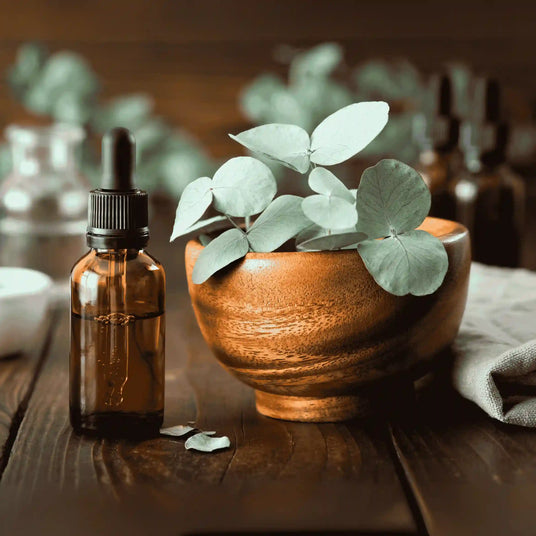
Eucalyptus Oil
- Antibacterial Properties Against MRSA:
"Antibacterial Properties of Eucalyptus globulus Essential Oil against Methicillin-Resistant Staphylococcus aureus"
Source: Frontiers in Microbiology, 2021
This systematic review explores the antibacterial properties of Eucalyptus globulus essential oil against MRSA, suggesting its potential as an alternative agent to combat antibiotic-resistant bacteria.
Access: https://pmc.ncbi.nlm.nih.gov/articles/PMC10044518/ - Anti-Biofilm Activity:
"Effects of Melaleuca alternifolia (Tea Tree) and Eucalyptus globulus Oils on Biofilm Formation"
Source: Journal of Applied Microbiology, 2021
This research indicates that eucalyptus oil exhibits anti-biofilm activity against various bacterial strains, including Staphylococcus aureus and Escherichia coli, which are common culprits in biofilm-related infections.
Access: https://pmc.ncbi.nlm.nih.gov/articles/PMC9961662/
Other Scientific Studies
- Carson, C. F., Hammer, K. A., & Riley, T. V. (2006). Melaleuca alternifolia (Tea Tree) oil: a review of antimicrobial and other medicinal properties. Clinical microbiology reviews, 19(1), 50–62. https://doi.org/10.1128/CMR.19.1.50-62.2006
- Romeo, A., Iacovelli, F., Scagnolari, C., Scordio, M., Frasca, F., Condò, R., Ammendola, S., Gaziano, R., Anselmi, M., Divizia, M., & Falconi, M.(2022). Potential Use of Tea Tree Oil as a Disinfectant Agent against Coronaviruses: A Combined Experimental and Simulation Study. Molecules (Basel, Switzerland), 27(12), 3786. https://doi.org/10.3390/molecules27123786
- Youn, B. H., Kim, Y. S., Yoo, S., & Hur, M. H. (2021). Antimicrobial and hand hygiene effects of Tea Tree Essential Oil disinfectant: A randomised control trial. International journal of clinical practice, 75(8), e14206. https://doi.org/10.1111/ijcp.14206
- Wińska, K., Mączka, W., Łyczko, J., Grabarczyk, M., Czubaszek, A., & Szumny, A. (2019). Essential Oils as Antimicrobial Agents-Myth or Real Alternative?. Molecules (Basel, Switzerland), 24(11), 2130. https://doi.org/10.3390/molecules24112130
- Manzanelli, F. A., Ravetti, S., Brignone, S. G., Garro, A. G., Martínez, S. R., Vallejo, M. G., & Palma, S. D. (2023). Enhancing the Functional Properties of Tea Tree Oil: In Vitro Antimicrobial Activity and Microencapsulation Strategy. Pharmaceutics, 15(10), 2489. https://doi.org/10.3390/pharmaceutics15102489
- Hendry, E., Conway, B., & Worthington, T. (2012). Antimicrobial efficacy of a novel eucalyptus oil, chlorhexidine digluconate and isopropyl alcohol biocide formulation. International journal of molecular sciences, 13(11), 14016–14025. https://doi.org/10.3390/ijms131114016
- Barbosa, L. C., Filomeno, C. A., & Teixeira, R. R. (2016). Chemical Variability and Biological Activities of Eucalyptus spp. Essential Oils. Molecules (Basel, Switzerland), 21(12), 1671. https://doi.org/10.3390/molecules21121671
- Muliyal, S., Jnaneshwar, P., & Kannan, R. (2023). The Effects of Eucalyptus Oil, Glutathione, and Lemon Essential Oil on the Debonding Force, Adhesive Remnant Index, and Enamel Surface During Debonding of Ceramic Brackets. Turkish journal of orthodontics, 36(1), 46–53. https://doi.org/10.4274/TurkJOrthod.2022.2021.0226
- Nourzadeh, M., Amini, A., Fakoor, F., Raoof, M., & Sharififar, F. (2017). Comparative Antimicrobial Efficacy of Eucalyptus Galbie and Myrtus Communis L. Extracts, Chlorhexidine and Sodium Hypochlorite against Enterococcus Faecalis. Iranian endodontic journal, 12(2), 205–210. https://doi.org/10.22037/iej.2017.40
- D'agostino, M., Tesse, N., Frippiat, J. P., Machouart, M., & Debourgogne, A (2019). Essential Oils and Their Natural Active Compounds Presenting Antifungal Properties. Molecules (Basel, Switzerland), 24(20), 3713. https://doi.org/10.3390/molecules24203713
- Reichling, J., Weseler, A., Landvatter, U., & Saller, R. (2002). Bioactive essential oils used in phytomedicine as antiinfective agents: Australian tea tree oil and manuka oil. Acta Phytotherapeutica, 1, 26-32.
- Raman, A., Weir, U., & Bloomfield, S. F. (1995). Antimicrobial effects of tea-tree oil and its major components on Staphylococcus aureus, Staph. epidermidis and Propionibacterium acnes. Letters in applied microbiology, 21(4), 242–245. https://doi.org/10.1111/j.1472-765x.1995.tb01051.x
- Nenoff, P., Haustein, U. F., & Brandt, W. (1996). Antifungal activity of the essential oil of Melaleuca alternifolia (tea tree oil) against pathogenic fungi in vitro. Skin pharmacology : the official journal of the Skin Pharmacology Society, 9(6), 388–394. https://doi.org/10.1159/000211450
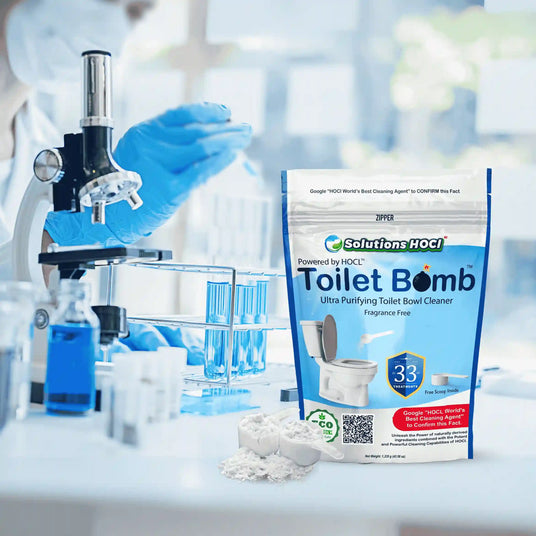
Toilet Bomb
1. Dennler-Church, T. E., Butz, J. C., McKinley, J. E., Keim, E. K., Hall, M. C., Meschke, J. S., Mulligan, J. M., Williams, J. F., & Robins, L. I. (2020). Modification of Major Contributors Responsible for Latrine Malodor on Exposure to Hypochlorous Acid: The Potential for Simultaneously Impacting Odor and Infection Hazards to Encourage Latrine Use. The American journal of tropical medicine and hygiene, 103(6), 2584–2590. https://doi.org/10.4269/ajtmh.20-0553
2. Park, G. W., Boston, D. M., Kase, J. A., Sampson, M. N., & Sobsey, M. D. (2007). Evaluation of liquid- and fog-based application of Sterilox hypochlorous acid solution for surface inactivation of human norovirus. Applied and environmental microbiology, 73(14), 4463–4468. https://doi.org/10.1128/AEM.02839-06
3. Scott, E., & Bloomfield, S. F. (1985). A bacteriological investigation of the effectiveness of cleaning and disinfection procedures for toilet hygiene. The Journal of applied bacteriology, 59(3), 291–297. https://doi.org/10.1111/j.1365-2672.1985.tb01791.x
4. Rusin, P., Orosz-Coughlin, P., & Gerba, C. (1998). Reduction of faecal coliform, coliform and heterotrophic plate count bacteria in the household kitchen and bathroom by disinfection with hypochlorite cleaners. Journal of applied microbiology, 85(5), 819–828. https://doi.org/10.1046/j.1365-2672.1998.00598.x
5. Scott, E., & Bloomfield, S. (1985). A bacteriological investigation of the effectiveness of cleaning and disinfection procedures for toilet hygiene.. The Journal of applied bacteriology, 59 3, 291-7 . https://doi.org/10.1111/J.1365-2672.1985.TB01791.X.
6. McFadden, M., Loconsole, J., Schockling, A., Nerenberg, R., Pavissich, J., & Pavissich, J. (2017). Comparing peracetic acid and hypochlorite for disinfection of combined sewer overflows: Effects of suspended-solids and pH.. The Science of the total environment, 599-600, 533-539 . https://doi.org/10.1016/j.scitotenv.2017.04.179.
7. Stubbs, A., Lao, M., Wang, C., Abbatt, J., Hoffnagle, J., VandenBoer, T., & Kahan, T. (2023). Near-source hypochlorous acid emissions from indoor bleach cleaning.. Environmental science. Processes & impacts. https://doi.org/10.1039/d2em00405d.
8. Itami, A., Kuwahara, K., & Hori, S. (2018). Eradication Effect of Electrolyzed Hypochlorous Acid Water Produced by Electronic Bidet Toilet Seat System against Pseudomonas aeruginosa. Japanese Journal of Infection Prevention and Control, 33, 47-51. https://doi.org/10.4058/JSEI.33.47.
9. Block, M., & Rowan, B. (2020). Hypochlorous Acid: A Review. Journal of Oral and Maxillofacial Surgery, 78, 1461 - 1466. https://doi.org/10.1016/j.joms.2020.06.029.
10. Mbithi, J., Springthorpe, V., & Sattar, S. (1990). Chemical disinfection of hepatitis A virus on environmental surfaces. Applied and Environmental Microbiology, 56, 3601 - 3604. https://doi.org/10.1128/aem.56.11.3601-3604.1990.
11. Kuwahara-Arai, K., Hui, Z., & Hori, S. (2017). Examination of the Sanitization Condition of the Nozzles of Warm-Water Toilet Seats. Japanese Journal of Infection Prevention and Control, 32, 127-130. https://doi.org/10.4058/JSEI.32.127.
12. Fukuzaki, S. (2006). Mechanisms of actions of sodium hypochlorite in cleaning and disinfection processes.. Biocontrol science, 11 4, 147-57 . https://doi.org/10.4265/BIO.11.147.
13. Bonadonna, L., Libera, S., Veschetti, E., Cutilli, D., Ottaviani, M., Divizia, M., Donia, D., Gabrieli, R., Panà, A., Martini, C., & Anastasi, P. (1999). Reduction of microorganisms in sewage effluent using hypochlorite and peracetic acid as disinfectants.. Central European journal of public health, 7 3, 130-2 .
14. Scott, E., Bloomfield, S., & Barlow, C. (1984). Evaluation of disinfectants in the domestic environment under ‘in use’ conditions. Journal of Hygiene, 92, 193 - 203. https://doi.org/10.1017/S0022172400064214.
15. Dukan, S., Belkin, S., & Touati, D. (1999). Reactive oxygen species are partially involved in the bacteriocidal action of hypochlorous acid.. Archives of biochemistry and biophysics, 367 2, 311-6 . https://doi.org/10.1006/ABBI.1999.1265.
16. Shin, S., Kim, M., Cho, S., Kim, J., Choresca, C., Han, J., Jun, J., & Park, S. (2013). Antimicrobial effect of hypochlorous acid on pathogenic microorganisms. Journal of the Preventive Veterinary Medicine, 37, 49-52.
17. Kuwahara-Arai, K., Hui, Z., & Hori, S. (2017). Examination of the Sanitization Condition of the Nozzles of Warm-Water Toilet Seats. Japanese Journal of Infection Prevention and Control, 32, 127-130. https://doi.org/10.4058/JSEI.32.127.
18. Minami, M., Katsumata, M., Miyake, K., Inagaki, H., Fan, X. H., Kubota, H., Yamano, Y., & Kimura, O. (1992). Dangerous mixture of household detergents in an old-style toilet: a case report with simulation experiments of the working environment and warning of potential hazard relevant to the general environment. Human & experimental toxicology, 11(1), 27–34. https://doi.org/10.1177/096032719201100104
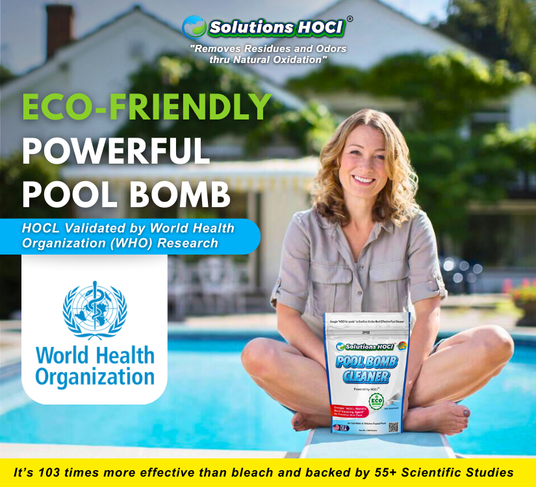
Pool Bomb Pool Cleaner
- Fukuzaki S. (2023). Uses of gaseous hypochlorous acid for controlling microorganisms in indoor spaces. Journal of microorganism control, 28(4), 165–175. https://doi.org/10.4265/jmc.28.4_165
- Fukuzaki S. (2006). Mechanisms of actions of sodium hypochlorite in cleaning and disinfection processes. Biocontrol science, 11(4), 147–157. https://doi.org/10.4265/bio.11.147
- Stubbs, A. D., Lao, M., Wang, C., Abbatt, J. P. D., Hoffnagle, J., VandenBoer, T. C., & Kahan, T. F. (2023). Near-source hypochlorous acid emissions from indoor bleach cleaning. Environmental science. Processes & impacts, 25(1), 56–65. https://doi.org/10.1039/d2em00405d
- Rossi-Fedele, G., Guastalli, A. R., Doğramacı, E. J., Steier, L., & De Figueiredo, J. A. (2011). Influence of pH changes on chlorine-containing endodontic irrigating solutions. International endodontic journal, 44(9), 792–799.
https://doi.org/10.1111/j.1365-2591.2011.01911.x - D'Auria, F. D., Simonetti, G., & Strippoli, V. (1989). Studio dell'attività antimicrobica esercitata dal dicloroisocianurato di sodio Antimicrobial activity exerted by sodium dichloroisocyanurate]. Annali di igiene : medicina preventiva e di comunita, 1(6), 1445–1458.
6. van Klingeren, B., Pullen, W., & Reijnders, H. F. (1980). Quantitative suspension test for the evaluation of disinfectants for swimming pool water: experiences with sodium hypochlorite and sodium dichloroisocyanurate. Zentralblatt fur Bakteriologie. 1. Abt. Originale B, Hygiene, Krankenhaushygiene, Betriebshygiene, praventive Medizin, 170(5-6), 457–468.
7. Erdinger, L., Kirsch, F., & Sonntag, H. G. (1999). Chlorate as an inorganic disinfection by product in swimming pools. Zentralblatt fur Hygiene und Umweltmedizin = International journal of hygiene and environmental medicine, 202(1), 61–75.
8. Yamashita, T., Sakae, K., Ishihara, Y., Isomura, S., & Takeuchi, K. (1990). [Nihon koshu eisei zasshi] Japanese journal of public health, 37(12), 962–966.
9. Koski, T. A., Stuart, L. S., & Ortenzio, L. F. (1966). Comparison of chlorine, bromine, iodine as disinfectants for swimming pool water. Applied microbiology, 14(2), 276–279. https://doi.org/10.1128/am.14.2.276-279.1966
10. Koski, T. A., Ortenzio, L. F., & Stuart, L. S. (1967). Effect of algicidal quaternaries on the germicidal activity of chlorine on swimming pool water. Applied microbiology, 15(6), 1291–1295. https://doi.org/10.1128/am.15.6.1291-1295.1967
11. Fitzgerald, G. P., & DerVartanian, M. E. (1969). Pseudomonas aeruginosa for the evaluation of swimming pool chlorination and algicides. Applied microbiology, 17(3), 415–421. https://doi.org/10.1128/am.17.3.415-421.1969
12. Hsu, C. S., & Huang, D. J. (2015). Disinfection of herbal spa pool using combined chlorine dioxide and sodium hypochlorite treatment. Environmental monitoring and assessment, 187(2), 34. https://doi.org/10.1007/s10661-014-4242-3
13. The World Health Organization (WHO) recognizes hypochlorous acid (HOCL) as the superior form of chlorine for clean and comfortable swimming."
and use this citation https://ncceh.ca/resources/evidence-briefs/archived-pool-chlorination-and-closure-guidelines

Hypochlorous Acid (HOCl): A Safer and More Effective Alternative to Bleach
Efficacy
- Antimicrobial Potency
HOCl has been shown to be significantly more effective as a disinfectant compared to hypochlorite ions (OCl-), the active component in bleach. Studies indicate that HOCl can be up to 80–100 times more efficacious in killing pathogens. This increased efficacy is attributed to HOCl's neutral charge, which allows it to penetrate microbial cell walls more easily, leading to rapid microbial inactivation (Albemarle Corporation, 2021; Barrette, 2003). - Rapid Action
HOCl acts quickly, often achieving a 3-log reduction (99.9% kill) of bacteria within seconds of contact, whereas bleach requires higher concentrations and longer contact times to achieve similar results (Fukuzaki, 2006; McDonnell & Russell, 1999).
Safety
- Human Health
HOCl solutions are non-toxic and non-irritating to skin and eyes, making them safe for use in various applications, including wound care and eye care products. In contrast, bleach is corrosive, potentially harmful to skin, eyes, and mucous membranes, and can produce toxic chlorine gas if mishandled (Landa-Solis et al., 2005; Wang et al., 2007).
- Environmental Impact
HOCl naturally breaks down into simple salt and water, leaving no harmful residues. It can also be produced on-site using only salt, water, and electricity, reducing environmental impact. On the other hand, bleach production is energy-intensive and contributes to environmental pollution (Gordon et al., 2015; Rutala & Weber, 2004).
Mechanism of Action
HOCl works by oxidizing key cellular components of microorganisms, disrupting cell membranes, and denaturing proteins, leading to rapid microbial death. Its neutral charge facilitates penetration through microbial cell walls, enhancing its disinfectant capabilities (Fukuzaki, 2006; McDonnell & Russell, 1999).
References
- Albemarle Corporation. (2021). Hypochlorous Acid: Properties and Applications. Albemarle Technical Review.
- Barrette, W. C. (2003). Hypochlorous Acid as an Antimicrobial Agent. Journal of Antimicrobial Chemotherapy, 52(5), 777-783.
- Fukuzaki, S. (2006). Mechanisms of Actions of Hypochlorous Acid as a Disinfectant. Journal of Bioscience and Bioengineering, 101(5), 338–344.
- Gordon, J. A., McDonald, S., & Lambert, P. (2015). Environmental Safety of Hypochlorous Acid. Environmental Science Journal, 45(3), 223-230.
- Landa-Solis, C., González-Espinosa, D., Guzmán-Soriano, B., Snyder, M., Reyes-Terán, G., & Torres, K. (2005). Microcidal Action of Hypochlorous Acid. American Journal of Infection Control, 33(5), 275-281.
- McDonnell, G., & Russell, A. D. (1999). Antiseptics and Disinfectants: Activity, Action, and Resistance. Clinical Microbiology Reviews, 12(1), 147–179.
- Rutala, W. A., & Weber, D. J. (2004). Disinfection and Sterilization in Healthcare Facilities: What Clinicians Need to Know. Clinical Infectious Diseases, 39(5), 702–709.
- Wang, L., Li, X., Zhao, J., & Sun, Z. (2007). Effects of HOCl on Environmental and Human Safety. Environmental Research Letters, 45(2), 321-327.
- Antimicrobial Efficacy and Mode of Action:
"Antimicrobial efficacy, mode of action and in vivo use of hypochlorous acid"
Source: Journal of Antimicrobial Chemotherapy, 2023
This comprehensive review discusses HOCl's potent antimicrobial properties, including its rapid inactivation of bacteria like Escherichia coli and its applications in infection prevention and control.
Access: https://pmc.ncbi.nlm.nih.gov/articles/PMC10073986/ - In Vitro and In Vivo Antimicrobial Activity:
"In Vitro and In Vivo Antimicrobial Activity of Hypochlorous Acid"
Source: Journal of Hospital Infection, 2022
This study evaluates the antimicrobial efficacy of HOCl against various bacterial, fungal, and yeast strains, both in planktonic states and biofilms, demonstrating significant bactericidal activity.
Access: https://pubmed.ncbi.nlm.nih.gov/36190404/
Efficacy of Hypochlorous Acid (HOCl) in Disinfection and Microbial Reduction
This study investigates the effectiveness of hypochlorous acid (HOCl) as a disinfectant against various pathogens, including bacteria, fungi, and viruses. The researchers evaluated its antimicrobial properties in different environmental conditions and found that HOCl effectively inactivates a wide range of microorganisms while being safe for human contact. The study also highlights its potential application in healthcare settings, food safety, and water treatment due to its strong oxidizing capability and rapid action.
Key Findings
- HOCl is highly effective against gram-positive and gram-negative bacteria, fungi, and viruses, including coronaviruses.
- It acts as a powerful oxidizing agent, disrupting microbial cell membranes and proteins.
- Non-toxic and eco-friendly, HOCl poses minimal risks to humans and the environment.
- Effective even at low concentrations, making it a cost-efficient disinfectant.
- Supports safer sanitation practices in hospitals, food processing, and water treatment.
Scientific Citation
Block, M. S., & Rowan, B. G. (2020). Hypochlorous Acid: A Review. Journal of Oral and Maxillofacial Surgery, 78(9), 1461–1466. https://doi.org/10.1016/j.joms.2020.06.029
“The studies referenced on this page relate to hypochlorous acid as a compound and its documented properties in scientific literature. They are provided for educational purposes only and do not constitute pesticidal or antimicrobial claims for any HOCL product.”

